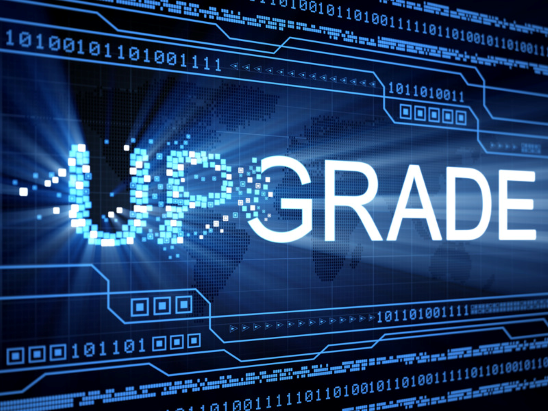· inflation reduction act · 5 min read
Electrical Upgrades in the IRA explained
Delve into the critical role of electrical panel upgrades under the Inflation Reduction Act. Understand how these upgrades can be a cornerstone in enhancing energy efficiency and safety in homes.

Embracing a sustainable future involves more than just adopting clean energy technologies; it requires a fundamental shift in our homes’ infrastructure. Electrical panel upgrades, recognized by various provisions within the Inflation Reduction Act, are becoming increasingly important in this green transition. They not only accommodate new technologies but also prepare our homes for a future where clean energy is commonplace.
The Role of Electrical Panel Upgrades in The IRA
Key components of a green home, such as solar panels and backup batteries, necessitate a dedicated circuit on your electrical panel. Similarly, electric vehicle charging stations require a high-capacity circuit, often incompatible with older panels. Upgrading your panel ensures your home is ready for these technologies.
Moreover, energy-efficient appliances like heat pumps, modern electric stoves, and heat pump dryers, while reducing fuel consumption, demand more electricity. An upgraded panel can handle this increased load.
Key Programs in the Inflation Reduction Act
The Inflation Reduction Act has introduced a new era of financial incentives for homeowners seeking to enhance their home’s energy efficiency. Among these incentives are substantial rebates and tax credits for electrical panel upgrades. These upgrades are included in several key acts, each designed to support different aspects of energy efficiency and clean energy adoption. Let’s delve into these key programs and how they can benefit you:
Energy Efficient Home Improvement Credit
The Energy Efficient Home Improvement Credit (25C) under the Inflation Reduction Act of 2022 offers homeowners a 30% credit on specific electrical improvements, capped at $600. This credit applies to upgrades like panelboards, sub-panelboards, branch circuits, or feeders that:
- Comply with the National Electric Code.
- Have a load capacity of not less than 200 amps.
- Enable the installation and use of qualified energy efficiency improvements or property.
Whether you’re considering upgrading your HVAC system, installing a Heat Pump, or adding an Energy Star certified appliance, this credit can make your home more energy-efficient and future-ready. For eligibility and application details, refer to Energy Star’s guidelines. Learn more about 25C at Energy Efficient Home Upgrades.
Alternative Fuel Vehicle Refueling Property Credit
The Alternative Fuel Vehicle Refueling Property Credit, a provision of the Inflation Reduction Act of 2022, offers a credit of up to $1,000 for the installation of a Level 2 EV Charger at your home. This includes the cost of an electrician if a 240V dedicated circuit breaker is required for the installation. With the average home Level 2 Charger running about $550, this doesn’t leave much room for electrical cost.
In addition to this federal credit, there may also be state-level incentives available, some of which cover installation costs. Therefore, it’s crucial to research local incentives before deciding on an EV Charger installation.
Residential Clean Energy Credit
The Residential Clean Energy Credit (25D) is a unique opportunity for homeowners looking to invest in solar or battery installation. Unlike other credits, it has no cap, allowing you to claim the full 30% of the cost, regardless of the total amount.
This credit opens doors for future planning. If you’re considering adding an EV Charger down the line, it’s wise to have an extra dedicated circuit installed now. Similarly, if you’re thinking about transitioning to more electric options like a heat pump or heat pump water heater, you can plan those upgrades as well.
The absence of a cap on this credit means you can think big and plan for the future without worrying about hitting a financial ceiling. It’s an opportunity to align your home with your long-term energy goals, making strategic decisions that not only save money now but also set you up for a more energy-efficient and sustainable future. For more information on the Residential Clean Energy Credit check out Home Clean Energy Credit.
High Efficiency Electric Home Rebate Act
The Electrification Rebate Act also known as the High Efficiency Electric Home Rebate Act (HEEHRA), is a significant stride towards energy efficiency in the United States. One of the key provisions of this Act is the financial incentive for electrical panel upgrades.
Eligible homes can use the high-efficiency tax credit for panel upgrades and wiring. Low-income households can take advantage of a $4,000 rebate for electrical panels and $2,500 for wiring (or half that for moderate-income households).
These rebates apply if the installation is consistent with the National Electric Code and has a load capacity of not less than 200 amps. More details on the Electrification Rebate Act are expected to be released soon.
The Act is expected to roll out by the end of 2023, and while the exact timeline depends on each state’s implementation, the benefits are worth the wait. To see if your household is eligible for these rebates, check out the IRA calculator from Rewiring America.
Conclusion
Electrical panel upgrades are more than just a home improvement project; they’re an investment in our sustainable future. With the Inflation Reduction Act’s support, homeowners can now make these upgrades more affordably, paving the way for a greener, more energy-efficient tomorrow.